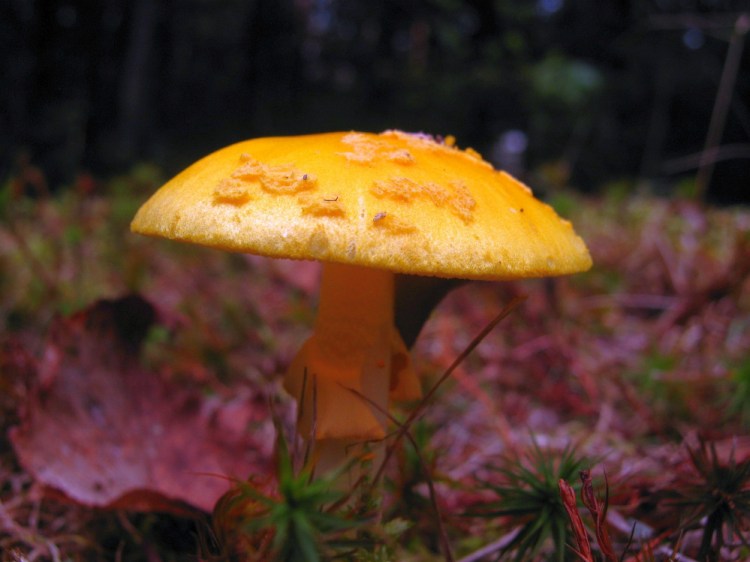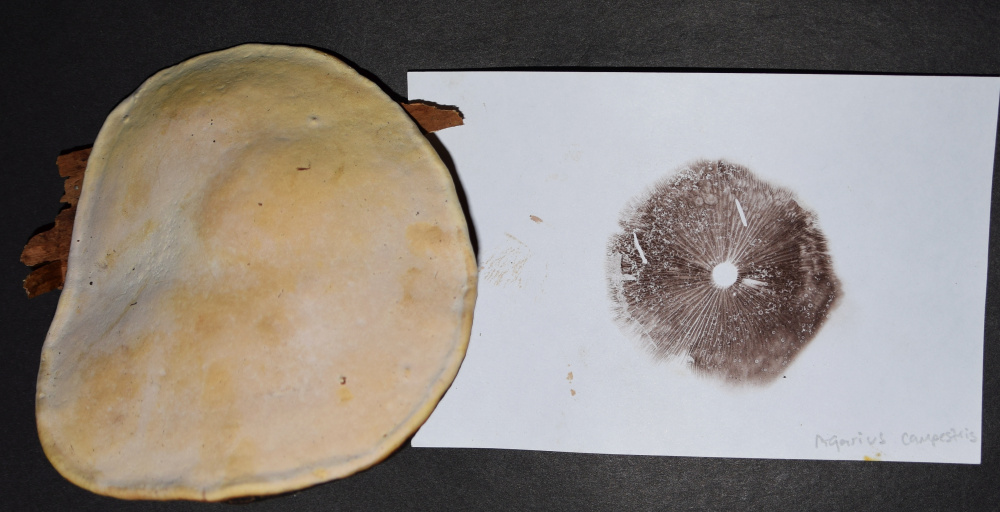Recently a reader emailed to say he had noticed an unusual abundance and variety of mushrooms in his yard this fall. He said he’d heard a mushroom boom of some kind was underway and was curious to know if anyone else had noticed the same phenomenon. I hadn’t heard of this, though on parts of my so-called lawn there were a few larger than usual sprays of yellow and tan colored mushrooms late in the summer.
Mushrooms have always mystified me, partly because they occupy a kind of psychic no-man’s-land between hallucinogenic and fatal — an Alice in Wonderland-like curiosity many in my generation have for them, I believe — and partly because, as everyday Earth beings go, they are strange. They look strange, they grow strangely, they live strangely. And there is a bewildering variety of them.
So to find out if mushrooms are taking over North America, I contacted the Mushroom Man, Ted Elliott, of Augusta. Ted assured me they are not taking over. In fact, his experience this year has been the opposite — in his excursions to the woods, he’s encountered fewer than usual, probably because it was so dry for so long this summer. I asked him if he’d come take a look at the mushroom situation in my woods in Troy, and he agreed.
Not to put too fine a point on it, but we didn’t find many mushrooms. The brook that runs under the driveway has been (until the October storms) dirt dry this year, a sign of the times, and mushrooms thrive in moisture. Since it’s been as dry in Wayne as in Troy, why would my email correspondent from that town be seeing so many mushrooms?
The answer, Ted said, is it’s likely that stray downpours of rain deposited a momentary glut of water at just the right time in the mushrooms’ spore cycle, triggering a boom. The stalk and cap is the mushroom-shaped fruiting, or spore-bearing body of many species that you see pop up out of the ground. The main part of the fungus, the mycelium, is the larger, threadlike portion underground or in wood. Some mycelia expand radially, and give rise to mushrooms or puffballs in fairy rings — magical-looking circular arrays of mushrooms.
I was mainly interested in learning from Ted what a mushroom is, exactly, but his workshops focus on identifying edible from inedible species. This is important, if you plan to collect and eat mushrooms. Unlike certain legends about, for example, “deadly” spiders, which are 95 percent spurious, many mushroom species not only can make you quite sick, they can kill you. Several different kinds of toxins occur in mushrooms that disrupt kidney, liver and digestive functions, with symptoms ranging from cramping, dizziness and severe abdominal pain to, sometimes, death. Once you start to feel ill from eating the wrong mushroom, it’s already too late — the toxin has settled in your organs and can’t be flushed out. The most dangerous ones tend to have names like destroying angel and death cap, so you get the picture.
The sparse collection we made from my woods included a bright orange jellylike blob called witch’s butter, which we found growing on the side of a fallen spruce tree; green stain, a gathering of tiny green mushrooms; wood ear; turkey tail; and artist’s conk, a wide, flat, hard mushroom that grows on trees, specimens of which last so long they can be used as an art medium.
Before Ted arrived, I took a quick look on the “lawn” to have specimens ready to point out to him and spotted a grove of seemingly healthy little gray mushrooms. A couple of hours later, they had disappeared. I thought I was having some kind of hallucinatory episode. But Ted said it’s not unusual for them to run their course quickly. He said my description suggested they were probably of the Amanita genus, some of which are edible and some of which are dangerous.
Even with Ted’s help, my identification skills are insufficient to gather mushrooms here in Troy to eat, though it can be done of course. When we lived in Shanghai, we ate some very weird-looking mushrooms, which the Chinese cultivate and which tasted unusual, but good.
In any case, this year’s wild mushroom crop in central Maine has been insufficient for a science fiction movie premise. They’re strange creatures, though. Who knows what the warmer and warmer weather will spawn?
Dana Wilde lives in Troy. You can contact him at naturalist1@dwildepress.net. His recent book is “Summer to Fall: Notes and Numina from the Maine Woods” available from North Country Press. Backyard Naturalist appears the second and fourth Thursdays each month.
Send questions/comments to the editors.





Success. Please wait for the page to reload. If the page does not reload within 5 seconds, please refresh the page.
Enter your email and password to access comments.
Hi, to comment on stories you must . This profile is in addition to your subscription and website login.
Already have a commenting profile? .
Invalid username/password.
Please check your email to confirm and complete your registration.
Only subscribers are eligible to post comments. Please subscribe or login first for digital access. Here’s why.
Use the form below to reset your password. When you've submitted your account email, we will send an email with a reset code.